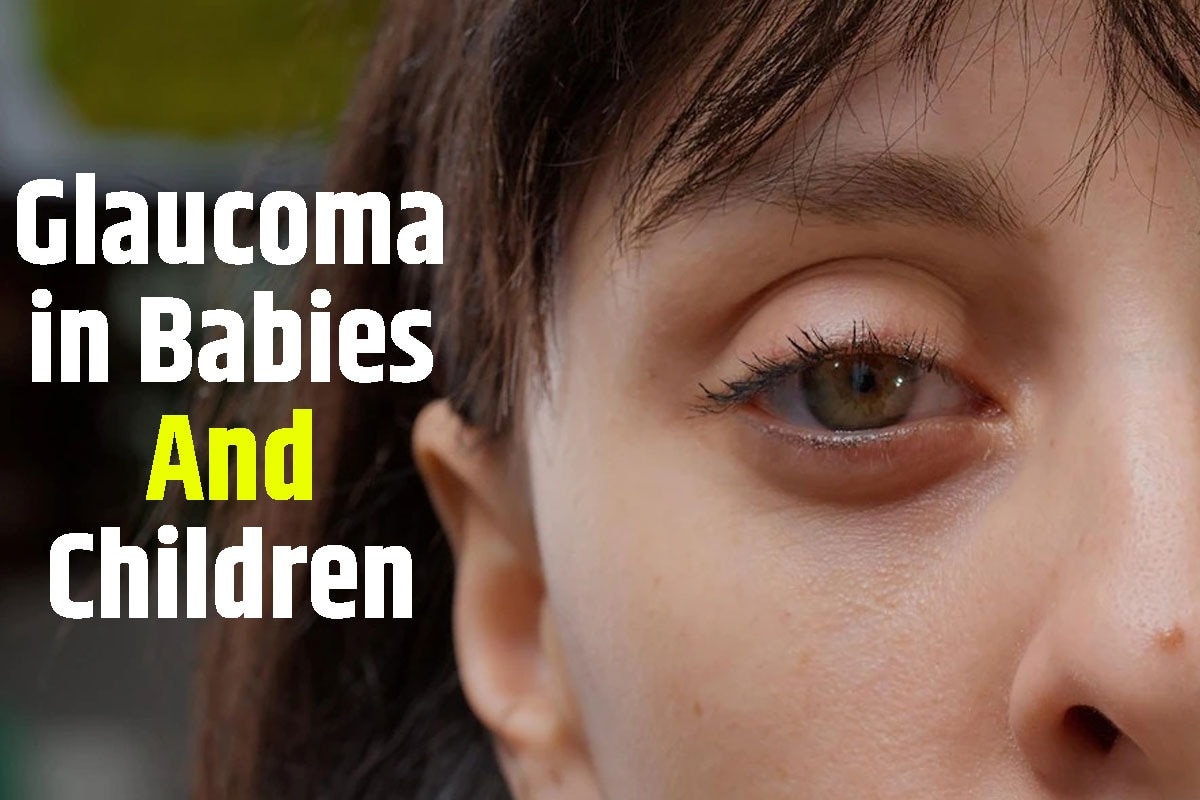Glaucoma can affect newborns and children, despite being more common in adults. Know the risk factors, signs, symptoms, prevention and treatment.
Due to the lack of symptoms and the fact that once sight is lost it cannot be restored, glaucoma is often referred to as the “silent thief of sight”. It is one of the main factors causing permanent blindness. The accumulation of fluid in the eye, known as aqueous humor, which raises intraocular pressure, is what causes glaucoma (IOP). Vision loss is the result of optic nerve damage caused by high IOP. Let’s investigate the causes and prevention of glaucoma in more detail this Glaucoma Awareness Month so everyone can have healthy vision.
Glaucoma can affect newborns and children, despite being more common in adults. Childhood glaucoma develops during the first three years of life, while congenital glaucoma manifests at birth. Children can be affected by juvenile glaucoma, a different type of glaucoma. The signs and symptoms of glaucoma in infants and children are often different from those in adults.
The most common cause of childhood glaucoma is the unintentional use of steroid eye drops for various allergic eye diseases. These eye drops can cause blinding glaucoma. Therefore, it is vital to consult an ophthalmologist for even the slightest eye ailment as a child’s eyes are very sensitive. When glaucoma is caused by or associated with a specific condition or disease, it is called secondary glaucoma.
Symptoms of glaucoma in children
The symptoms of glaucoma depend on the type and stage of the individual’s condition. Glaucoma can affect one eye or both.
The most common symptoms of congenital/childhood glaucoma are excessive tearing of the eyes, sensitivity to light, and a large cloudy cornea that can make the iris appear opaque. On the other hand, juvenile glaucoma tends to develop without obvious symptoms, like adult glaucoma. Juvenile glaucoma patients often have a family history. On examination, the eye pressure will usually be elevated and there may be signs of cupping of the optic nerve. If the eye pressure rises rapidly, there may be pain and discomfort.
Some people may have non-specific symptoms such as headache, watery eyes, or seeing a colored halo, which resemble other eye problems or medical conditions. Parents and caregivers should look for these symptoms and get an early consultation with an ophthalmologist.
Risk Factors and Prevention:
There are ways to prevent vision loss and blindness from glaucoma. That’s how:
The best way to protect your eyesight from glaucoma is to have regular, comprehensive eye exams. Many forms of glaucoma do not have warning signs. If a child is at risk of glaucoma, it is essential that they have regular eye exams every year that include measurement of intraocular pressure. This will help in early detection. It is equally important to take your glaucoma medications as prescribed by your doctor.
- A healthy diet helps prevent a host of chronic diseases, and glaucoma is no exception.
- Eye injuries can lead to glaucoma. Wearing protective eyewear is recommended while participating in sports or when necessary.
- Intense exercise that increases your heart rate can also increase eye pressure. But regular walking and exercise at a moderate pace can reduce eye pressure and improve overall health.
- If you have glaucoma or are at high risk for the disease, do not place your head below your heart for long periods of time. Head-down positions can significantly increase eye pressure. It is also important to sleep in the correct position. Avoid sleeping with your eye against the pillow or on your arm.
Glaucoma Treatments
Glaucoma treatment options include medication, surgery, or both. For babies and young children, surgery is often the first treatment to prevent long-term vision problems. The goal of surgery is to repair the drainage problem so that the fluid drains normally from the eye. There are different types of surgical options available. The ophthalmologist decides the best appropriate surgery for the patient based on several factors, including the underlying nature of the disease. Several surgical options are available today, including trabeculotomy and goniotomy, with the highest success rates. Other procedures include trabeculectomy, combined trabeculotomy, and trabeculectomy and glaucoma drainage devices, to name a few. The sooner the surgery is performed, the better the result will be.
Cyclophotocoagulation is the last resort for a blind and painful eye that does not respond to other treatments. This type of surgery is performed in severe cases of childhood glaucoma.
Specific glaucoma treatment will be determined by the ophthalmologist based on the child’s age, general health and medical history, extent of disease, tolerance to specific medications, procedures or therapies, and other factors. Children diagnosed with pediatric glaucoma are at increased risk of developing other eye problems as they grow older. Therefore, early diagnosis and treatment, combined with careful monitoring, are crucial for long-term eye health.
(With input from IANS)
